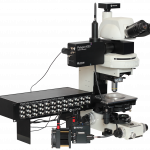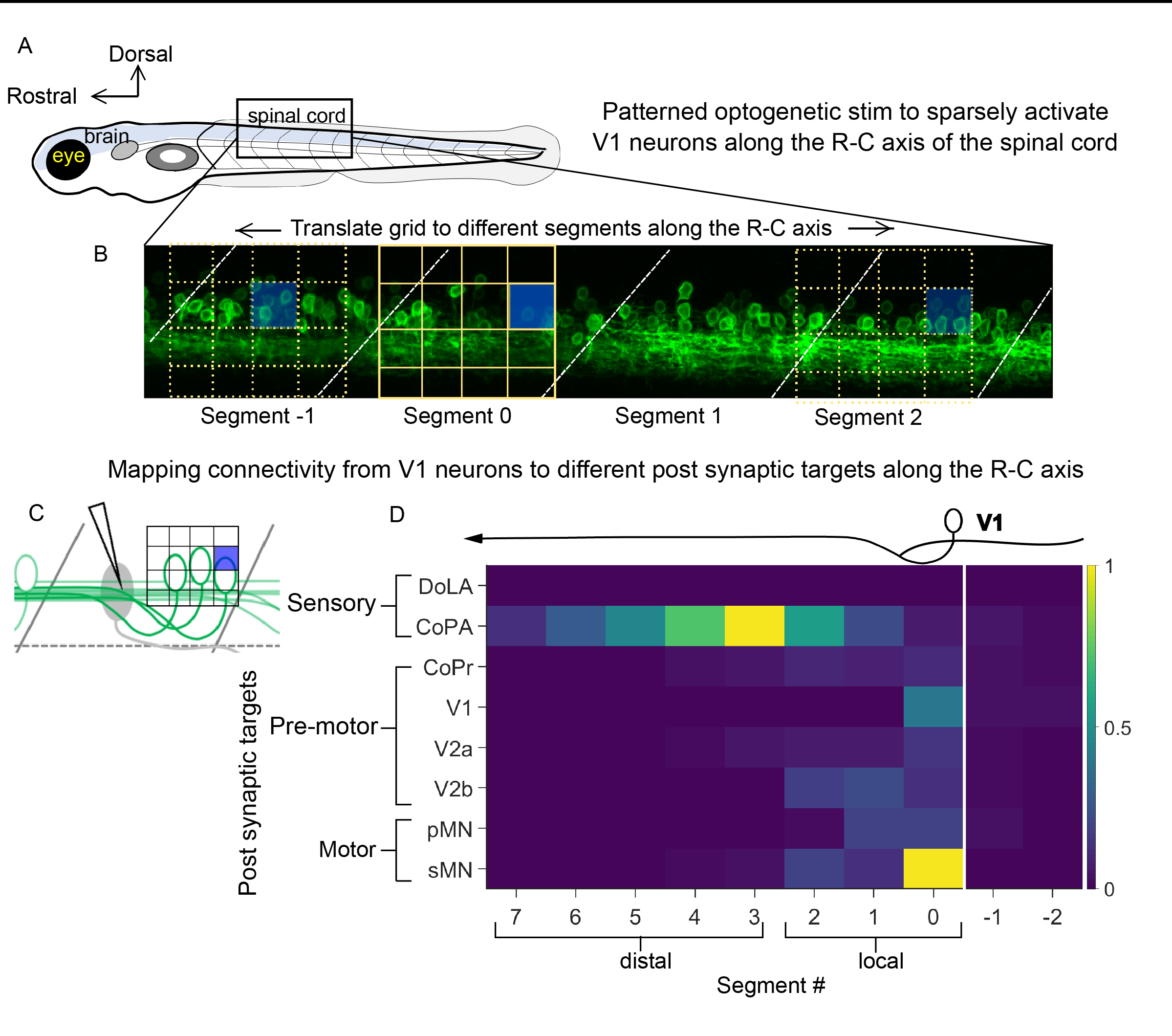
A Rostro-Caudal Map of V1 Inhibition in Axial Motor Circuits
Published on 2021/12/17 Research powered by Mightex’s Polygon1000 


Introduction
Though the spinal cord is responsible for most motor output, the organization of inhibitory networks within it is much less clear. Most spinal interneurons project axons along the rostro-caudal (R-C) or longitudinal axis of the cord, yet connectivity along this axis remains ill explored owing to the inaccessibility in mammalian models. To circumvent this, we used larval zebrafish (Fig. 1A) and in vivo optogenetics and electrophysiology to map connectivity of a major inhibitory population: V1 (En1+) neurons.
Using the unique illumination patterns available with the Mightex Polygon, we projected a 16×16 grid spanning approximately one spinal segment and sequentially activated 0-6 V1 neurons at a time. By translating this grid illumination to different spinal segments rostrally and caudally, we were able to test connectivity from V1 neurons along significant lengths of the spinal cord (Fig. 1B; Video 1). To test connectivity, we recorded IPSCs in post-synaptic targets while optogenetically stimulating V1 neurons in different positions in the spinal cord (Fig. 1C).
Methods
We found that V1 neurons, despite extending long axons, only inhibit motor neurons and other pre-motor targets locally (up to 3 segments). In contrast, these neurons connect to dorsal horn sensory targets like CoPA neurons all along their axons, thereby exhibiting for the first time, a differential map of connectivity along the spinal R-C axis. This is illustrated in the summary heat map showing normalized charge transfer for each neuronal target population (Fig. 1D). We further showed using a computational model that this pattern of local inhibition is crucial for smooth and reliable propagation of locomotion.
These results were recently published in Current Biology (Sengupta et al.,2021. https://doi.org/10.1016/j.cub.2021.06.053.)

Figure 1: Experimental Overview.
Video 1: Patterned optogenetic stimulation of spinal segments
Catherine Thomas, PhD Senior Liaison and Development Scientist at Mightex
To read the full publication, please click here.